Table of Contents
Project at a Glance
|
|
Project Name | Dwarka Expressway Highway |
Project Type | Greenfield |
Project Location | Gurugram, India |
Sector | Infrastructure |
Subsector | Expressway (Road Transport) |
Project Status | Completed/Commissioned |
Starting Point | NH 48 (old NH 8) at Shiv Murti, Mahipalpur, Delhi |
Terminal | NH 48 near Kherki Daula Toll Plaza in Gurgaon |
Project Developer | National Highways Authority of India (NHAI) |
Contractors | J Kumar and Larsen & Toubro |
Project Start Date | 2019 |
Project Completion Date | 2024 |
Special Mention | India's First Eight-Lane Elevated Expressway |
Project Overview
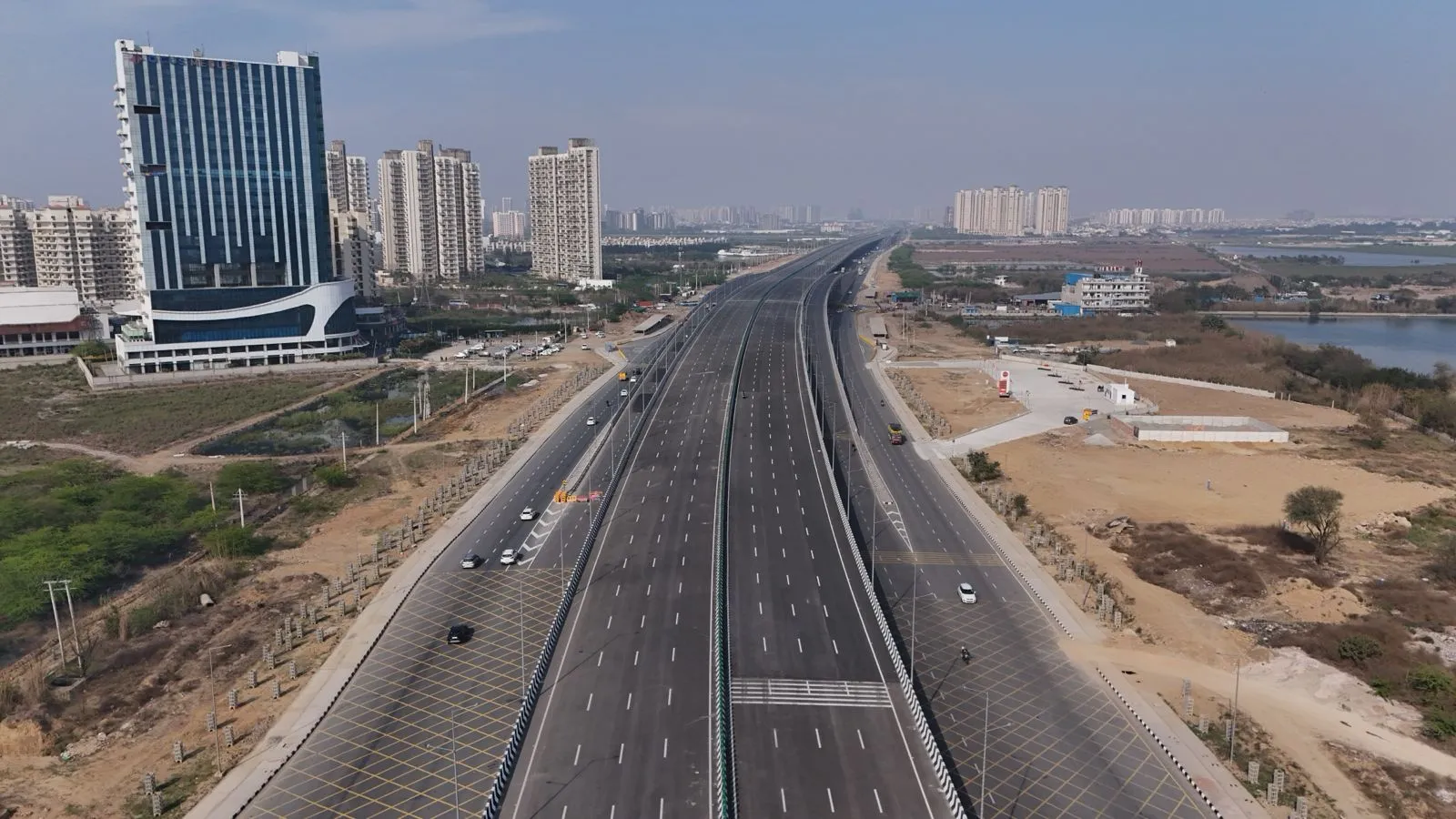
The project's inception was done on 9th March 2019, with the ceremonial placement of the foundation stone by the former Union ministers Sushma Swaraj, Arun Jaitley, and Nitin Gadkari.
The overall length of Dwarka Expressway is 29 kilometers, with 18.9 kilometers located in Haryana and the remaining 10.1 kilometers situated in Delhi.
The Dwarka highway is India's inaugural elevated urban highway with eight lanes and access control. The elevated road will have a length of 9 kilometers and a width of 34 meters.
Find the Latest Road Infrastructure Projects in India
Gain exclusive access to our industry-leading database of road infrastructure project opportunities with detailed project timelines and stakeholder information.
Collect Your Free Leads Here!
No credit cardUp-to-date coverage
Joined by 750+ industry professionals last month
Apart from easing traffic congestion on the Delhi-Haryana border, the Dwarka expressway route will offer a seamless connection to the Indira Gandhi International Airport in Delhi and the Gurugram Bypass.
This infrastructure project is a component of a broader plan known as the Bharatmala project. Additionally, it is a component of the Centre's INR 60,000 crore highway building plan.
The highway will reduce the journey duration by a minimum of 20 minutes for the 90,000 daily commuters who use this route.
Project Background
Initiated by the Haryana government in 2006 as the Delhi Gurgaon expressway, the project encountered multiple hurdles and setbacks. It was a result of disputes over land acquisition and legal proceedings. National Highways Authority of India (NHAI) took over due to rising housing demand and the requirement for enhanced connectivity in the New Gurgaon area.
The Dwarka Expressway was modified by the NHAI to incorporate an elevated expressway with the existing road running below it after it was formally named a national highway in 2016. In March 2019, construction on the project commenced with the purpose of completing the much-anticipated connectivity and accommodating the region's rapidly growing population.
Project Timeline
March 2019: Foundation stone was laid by Union Minister Nitin Gadkari on 8th March 2019.
August 2019: After the Delhi government authorized Package 2 of the Dwarka Expressway, the contractor began Package 2's preparatory work and established a camp at the location.
February 2021: Over 50% of the construction work was finished. The remaining section until Gurugram was anticipated to be finished by August 2021.
September 2021: The cloverleaf section of the expressway was expected to be completed by September 2022.
June 2022: The Delhi Gurugram Expressway was expected to be completed by early 2023.
August 2023: The expressway, formerly projected to be finished within the next 3 months, has now been rescheduled for completion in August 2024.
March 2024: PM Modi inaugurated the Haryana section of the expressway. As per the official press release, this section has been built for USD 500 million (INR 4,100 Cr), Furthermore, this section comprises of 10.2 km long Delhi-Haryana Border to Basai ROB (Rail-over-Bridge) and 8.7 km long Basai ROB to Kherki Daula.
Project Scope
The Dwarka Expressway flyover is the inaugural elevated urban expressway in India. It is specifically created to mitigate traffic congestion in the new Gurugram area and improve accessibility between Delhi and Gurugram. The project is segmented into two distinct portions.
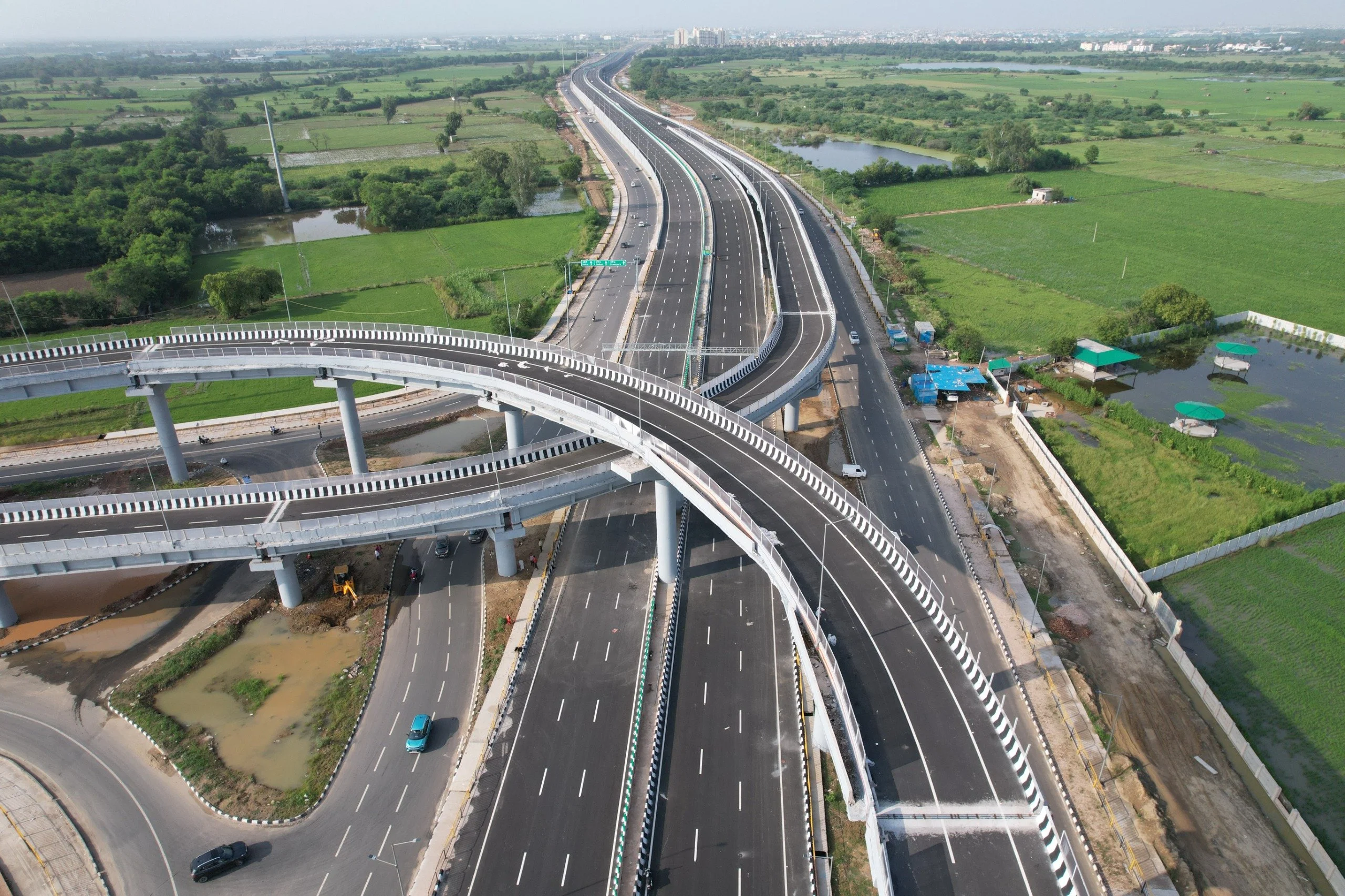
The 19 km long elevated portion of Dwarka Expressway Gurgaon has been built on a solitary pillar and consists of 8 lanes. This innovative design has two distinct benefits. First, it reduces the land footprint needed for the expressway. Second, it enables the construction of bigger service roads to accommodate the city's heavy traffic flow.
The Delhi NCR segment of the expressway adjacent to IGI airport features a tunnel that spans 3.6 kilometers in length. It consists of eight lanes. This tunnel, referred to as a 'shallow tunnel', was constructed to circumvent any security concerns or disruptions to the airport's radar system. Despite logistical constraints, the tunnel was successfully designed. The tunnel incorporates an emergency escape and a specialized control room to watch over the safety of commuters.
The highway consists of more than 20 flyovers and bridges, two rail overbridges and underpasses, 11 car underpasses, and 20 underground pedestrian crossings. The highway will incorporate cutting-edge technologies such as Intelligent Transport System (ITS), Toll Management Systems, CCTV cameras, Advanced Traffic Management Systems, and surveillance.
Project Cost
The Dwarka Expressway cost is valued at around USD 1.2-1.4 billion (INR 9000-10,000 crore). The Haryana segment has been constructed for INR 4,100 crores. The funding for the DEW project would be provided by the Bharatmala Pariyojana, as part of the National Corridor Efficiency Improvement Programme. Here are the projected expenses for each phase of the project:
First – INR 2,507 crore
Second – INR 2,068 crore
Third – INR 2,228 crore
Fourth – INR 1,859 crore
Contractors Involved
The project has been partitioned into four packages, with two located in Delhi, encompassing a distance of 10.10 km, and two situated in Gurugram, covering a distance of 19 km. The packages were distributed among the contractors listed below:
Package 1: J Kumar Infraprojects was awarded the contract valued at INR 1,349 crore. The Delhi government granted approval in July 2020, and the part encompasses a distance of 9 kilometers.
Package 2: The contract, worth INR 1,540 crore, was granted to J Kumar Infraprojects. The project path spans from Bijwasan Road Underbridge to the Delhi/Haryana Border, covering a total distance of 4.2 kilometers.
Package 3: Larsen & Toubro was granted the contract, which is valued at INR 1,334 crore. This part encompasses the area from the Delhi/Haryana border to the Basai Rail Overbridge, spanning a total distance of 10.2 kilometers. The project will consist of an 8.5-kilometer, eight-lane flyover that will be built on a single pier.
Package 4: Larsen & Toubro has been awarded the contract, which has a total value of INR 1,046 crore. The structure spans from the Basai Rail Overbridge to Kherki Dhaula, measuring a total length of 8.8 kilometers. The highway will merge with Central Peripheral Road at its southern terminus and terminate at Southern Peripheral Road.
Challenges During Construction
The construction of the Dwarka Expressway in India faced several challenges, including:
Land Acquisition
Obtaining land is frequently a major obstacle in large-scale infrastructure projects. The construction of the Dwarka Expressway included the procurement of a substantial land area. It entailed engaging in discussions with landowners, reaching agreements, and even resorting to legal proceedings.
Environmental Clearances
Government organizations demand numerous environmental permissions for infrastructure projects, particularly those related to roadways. Acquiring these permissions was a very time-consuming and intricate procedure. It included conducting environmental impact studies and implementing efforts to reduce negative effects.
Relocation of Utilities
The construction of the expressway required the relocation of utilities such as power lines, water pipes, and telephone cables. Managing the coordination of numerous utility providers and minimizing service disruptions was a hard challenge.
Benefits of the Project
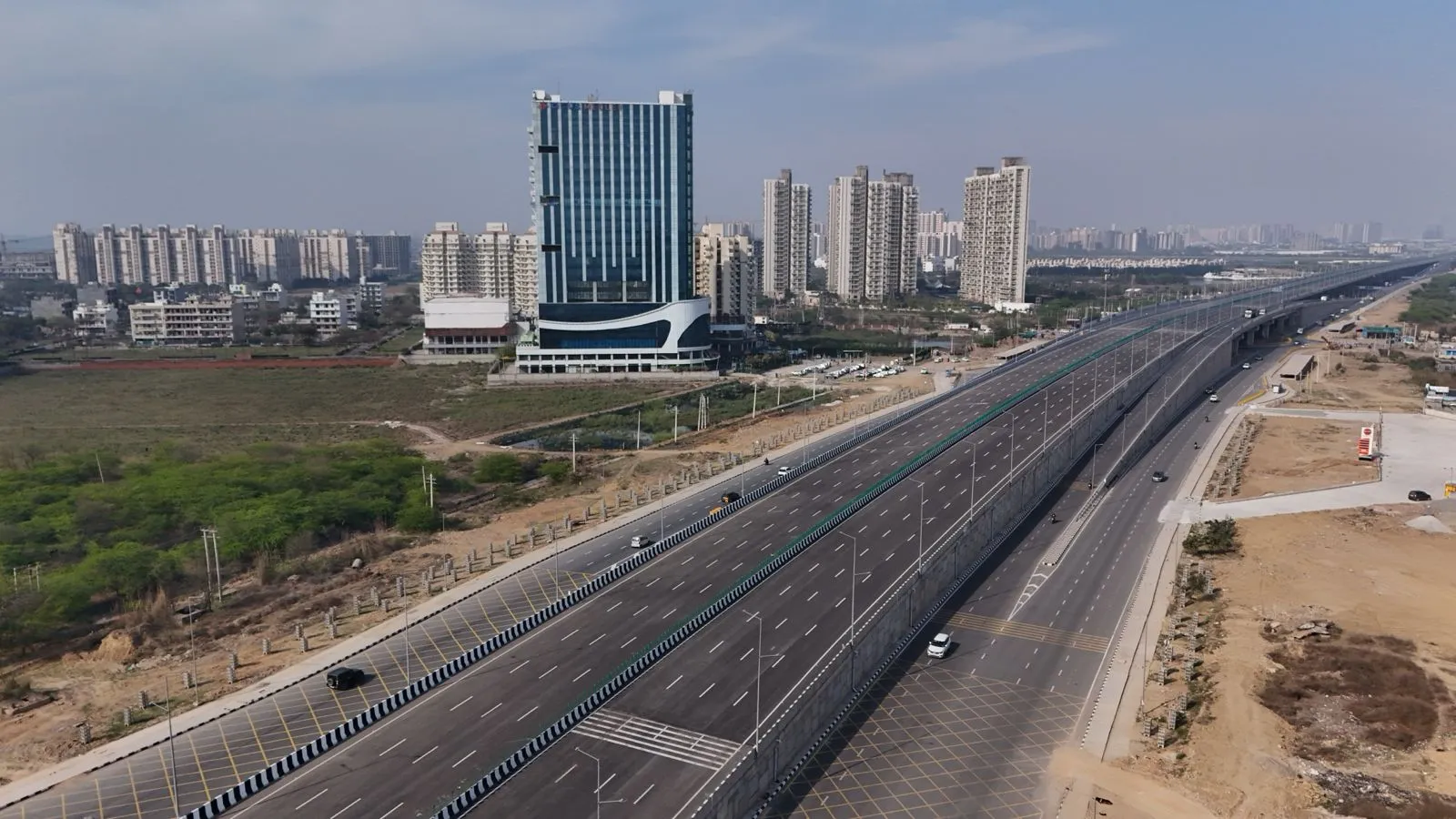
The project offers a wide range of benefits. Some of these benefits include the following,
Emergence of residential clusters
The construction of the Dwarka Expressway has enabled the establishment of residential clusters along the expressway and enhanced the connectivity between Delhi and Gurugram. The territory has transformed into a priority development zone, resulting in the total expansion of the cluster.
Impact on demand and prices
The enhancement in connectivity has resulted in a surge in demand from end-users, particularly in the Dwarka sector and its adjacent areas in West Delhi. The majority of these purchasers are seeking to enhance their standard of living by transitioning to flats that include contemporary conveniences, particularly designated parking areas.
Traffic Decongestion
The presence of a 75-meter wide route running parallel to the Dwarka Expressway will greatly enhance the flow of traffic between Delhi and Gurgaon by providing a means to divert intermediate traffic.
Environmental Benefits
Approximately 12,000 trees were relocated in the vicinity during the highway construction process. It was executed for the first time in India, on such a large scale.
Dwarka Expressway 2025 Update
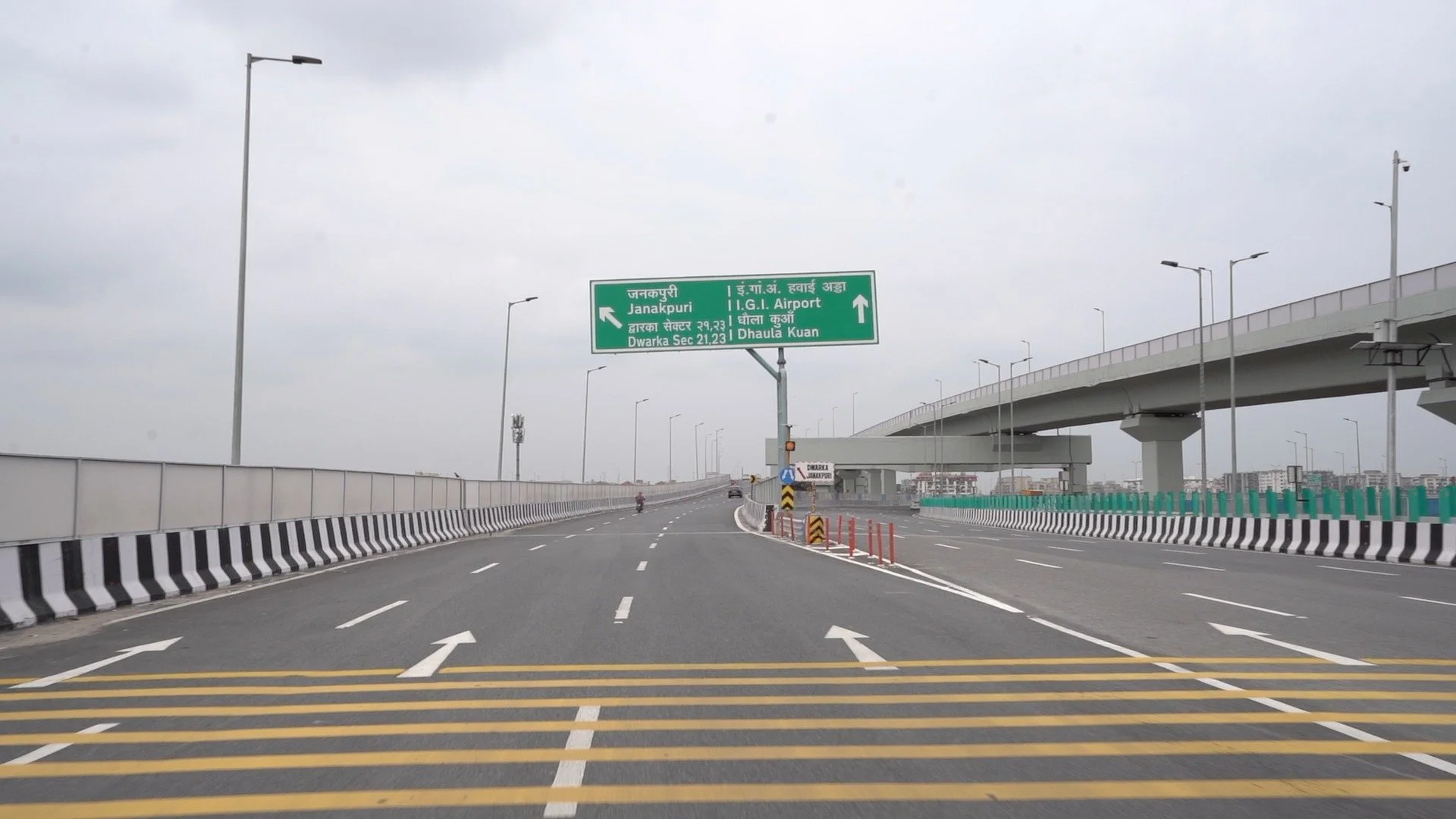
On 17th August 2025, Prime Minister Narendra Modi two major infrastructure projects which include the Dwarka Expressway and the Urban Extension Road-II (UER-II). This new stretch of the expressway is 10.1 km long and includes 5.1 km tunnel connecting directly to Indira Gandhi International Airport, facilitating smoother access from Gurugram and West Delhi and reducing travel time to airport to about 20 minutes. This project cost of the Delhi stretch is INR 5,360 crores.
Conclusion
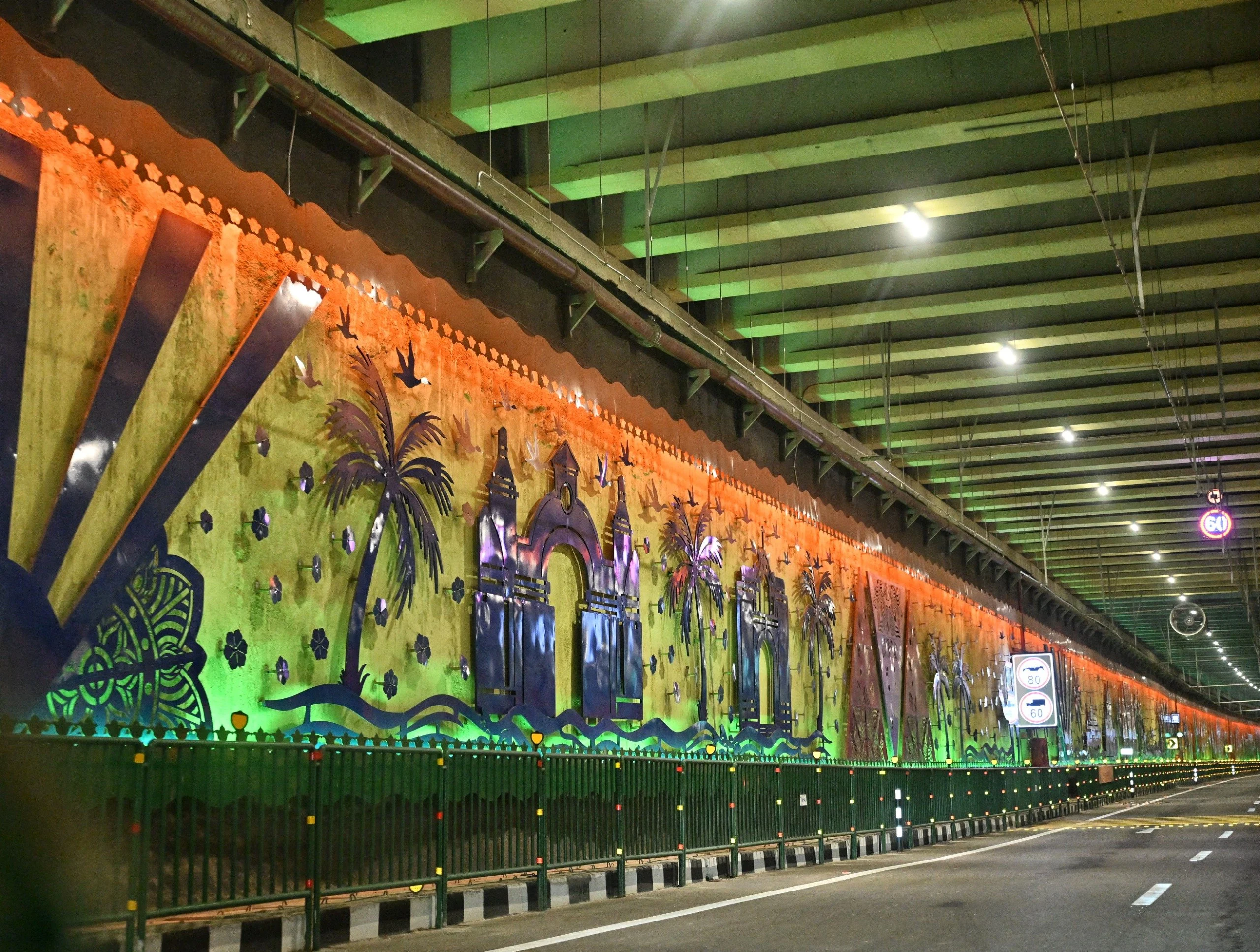
The completion of the Dwarka Expressway Highway will mark a significant milestone in India's infrastructure development. After years of planning, hurdles, and construction efforts, the INR 9000 crore highway stands as a testament to India’s increased importance on infrastructure projects. Besides enhancing connectivity between West and South Delhi and Gurugram, the expressway is believed to revive real estate sector growth around it.
Get Early Access to Tender/Bid Opportunities in Road & Highway Infrastructure Projects in India!
Gain early access to reliable and high-quality insights on upcoming, in-progress, and completed Road & Highway Infrastructure Projects in India. Our user-friendly platform provides essential details, timely updates, key stakeholder contact information, and business opportunities tailored for EPC contractors, civil engineers, general contractors, construction project managers, investors, and legal advisory/consulting firms.


Leave a Comment
We love hearing from our readers and value your feedback. If you have any questions or comments about our content, feel free to leave a comment below.
We read every comment and do our best to respond to them all.